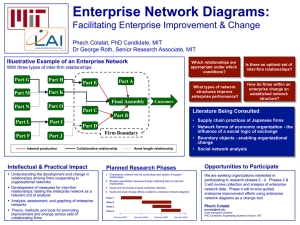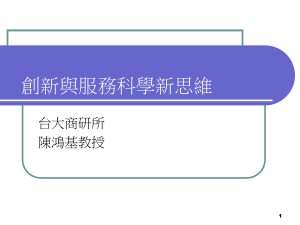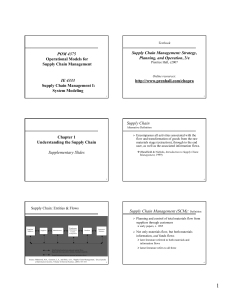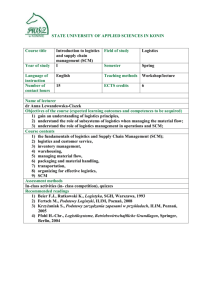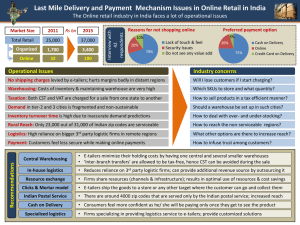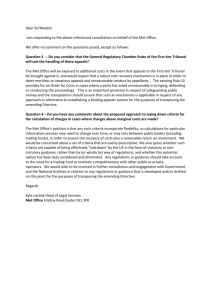Research Abstract
advertisement
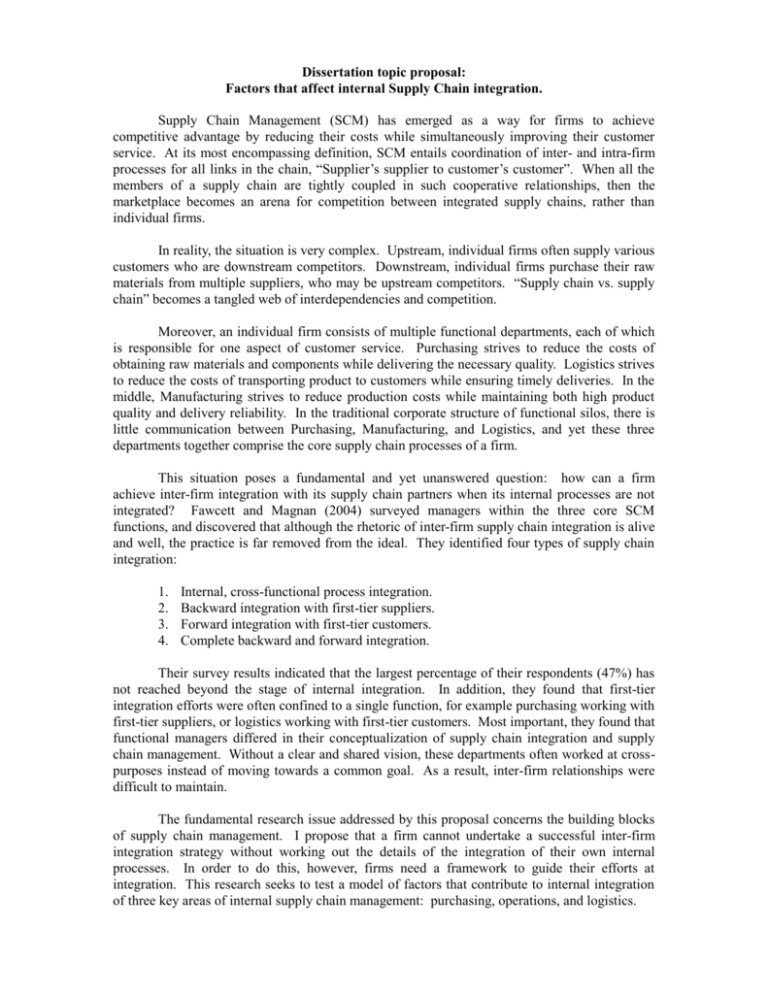
Dissertation topic proposal: Factors that affect internal Supply Chain integration. Supply Chain Management (SCM) has emerged as a way for firms to achieve competitive advantage by reducing their costs while simultaneously improving their customer service. At its most encompassing definition, SCM entails coordination of inter- and intra-firm processes for all links in the chain, “Supplier’s supplier to customer’s customer”. When all the members of a supply chain are tightly coupled in such cooperative relationships, then the marketplace becomes an arena for competition between integrated supply chains, rather than individual firms. In reality, the situation is very complex. Upstream, individual firms often supply various customers who are downstream competitors. Downstream, individual firms purchase their raw materials from multiple suppliers, who may be upstream competitors. “Supply chain vs. supply chain” becomes a tangled web of interdependencies and competition. Moreover, an individual firm consists of multiple functional departments, each of which is responsible for one aspect of customer service. Purchasing strives to reduce the costs of obtaining raw materials and components while delivering the necessary quality. Logistics strives to reduce the costs of transporting product to customers while ensuring timely deliveries. In the middle, Manufacturing strives to reduce production costs while maintaining both high product quality and delivery reliability. In the traditional corporate structure of functional silos, there is little communication between Purchasing, Manufacturing, and Logistics, and yet these three departments together comprise the core supply chain processes of a firm. This situation poses a fundamental and yet unanswered question: how can a firm achieve inter-firm integration with its supply chain partners when its internal processes are not integrated? Fawcett and Magnan (2004) surveyed managers within the three core SCM functions, and discovered that although the rhetoric of inter-firm supply chain integration is alive and well, the practice is far removed from the ideal. They identified four types of supply chain integration: 1. 2. 3. 4. Internal, cross-functional process integration. Backward integration with first-tier suppliers. Forward integration with first-tier customers. Complete backward and forward integration. Their survey results indicated that the largest percentage of their respondents (47%) has not reached beyond the stage of internal integration. In addition, they found that first-tier integration efforts were often confined to a single function, for example purchasing working with first-tier suppliers, or logistics working with first-tier customers. Most important, they found that functional managers differed in their conceptualization of supply chain integration and supply chain management. Without a clear and shared vision, these departments often worked at crosspurposes instead of moving towards a common goal. As a result, inter-firm relationships were difficult to maintain. The fundamental research issue addressed by this proposal concerns the building blocks of supply chain management. I propose that a firm cannot undertake a successful inter-firm integration strategy without working out the details of the integration of their own internal processes. In order to do this, however, firms need a framework to guide their efforts at integration. This research seeks to test a model of factors that contribute to internal integration of three key areas of internal supply chain management: purchasing, operations, and logistics.
